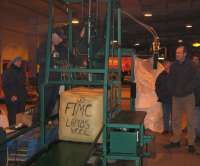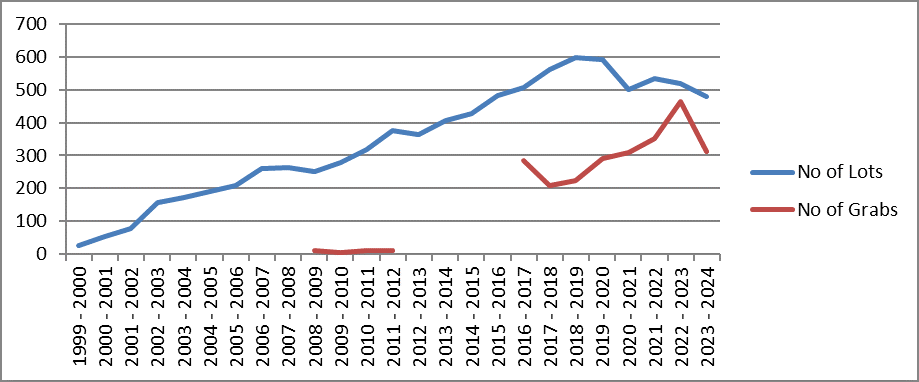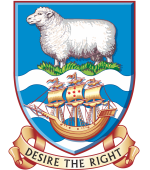Core Sampling

Background and information
In 1999 the Department of Agriculture (DoA) set up a link with the New Zealand Wool Testing Authority (NZWTA) to be their accredited representatives to oversee the core sampling of Falkland Islands bales of wool.
The information gained from the testing of core samples is used to generate a legally binding document that enables growers to sell their product worldwide, it is known as an IWTO Pre-Sale Test Certificate.
The criteria shown on the IWTO Test Certificate are;
- Farm Bale Brand
- Wool Description
- Lot Number
- Fibre fineness Laserscan (IWTO 12)
- Coefficient of Variation (µ)
- Fibres > 30 microns
- Calculated Commercial Yields inc. Schlumberger Dry 1% TFM
- Colour (IWTO – 56) D65/10 & C/2(w)
- Vegetable Matter Base (IWTO – 19)
- Gross mass
- Declared Tare
- Nett Mass
- Total bales
- Bale numbers.
Benefits of coring locally:
- Opens up the opportunity to sell wool to a greater number of destinations.
- Sell it in the international market place and gain a price for their product that I based on world market indicators.
- To rationalise wool freight logistics.
- To increase flexibility as to time of selling.
Since 2007/08 the Falkland Island Wool Company, which operate the wool warehouse on FIPASS, have been using a second hand semi-automatic core/grab machine replacing the antiquated hand coring system. This machine is now old and is being replaced by an automatic core and grab machine which will be housed and operated in the new land based wool warehouse once constructed.
Trends/Updates
In the first year growers were cautious of this new service and only 726 bales were manually cored. Over the years interest has increased, this last season (2023/2024) saw 6623 bales cored, a slight drop on the previous year, 7058, though this could be accounted for the drop in sheep numbers due to a drying climate due to climate change.

Grab Sampling
There is also the opportunity to grab sample bales. The main purpose of grab sampling is to test the length & strength of the staple and the position of the break within the staple. In countries that sell wool by auction the grab sample is also used for display to let potential buyers see and feel the quality of the wool. Only main lines tend to get grab sampled.
Grab sampling in the Falklands increased dramatically during the covid era when it became apparent that without this ‘extra’ data, Falkland’s wool was being heavily discounted, as seen in the chart above.
The criteria shown on the IWTO Test Certificate are;
- Farm Brand
- Wool Description
- Lot Number
- Gross Mass
- Declared Tare
- Nett Mass
- Bale Numbers
- Mean Staple Length (mm)
- Coefficient of Variation Staple Length (%)
- Mean Staple Strength (N/Kt)
- Distribution of position of break Tip: %, Middle: %, Base: %
Grab sampling is vital to wool buyers to fully understand the characteristics of the wool they are buying to determine processing abilities and end use. Lots f wool on the market without this data tend to be discounted in price due to unknown factors i.e. Length, Strength and Mid-break.
For more information on coring please contact This email address is being protected from spambots. You need JavaScript enabled to view it..

